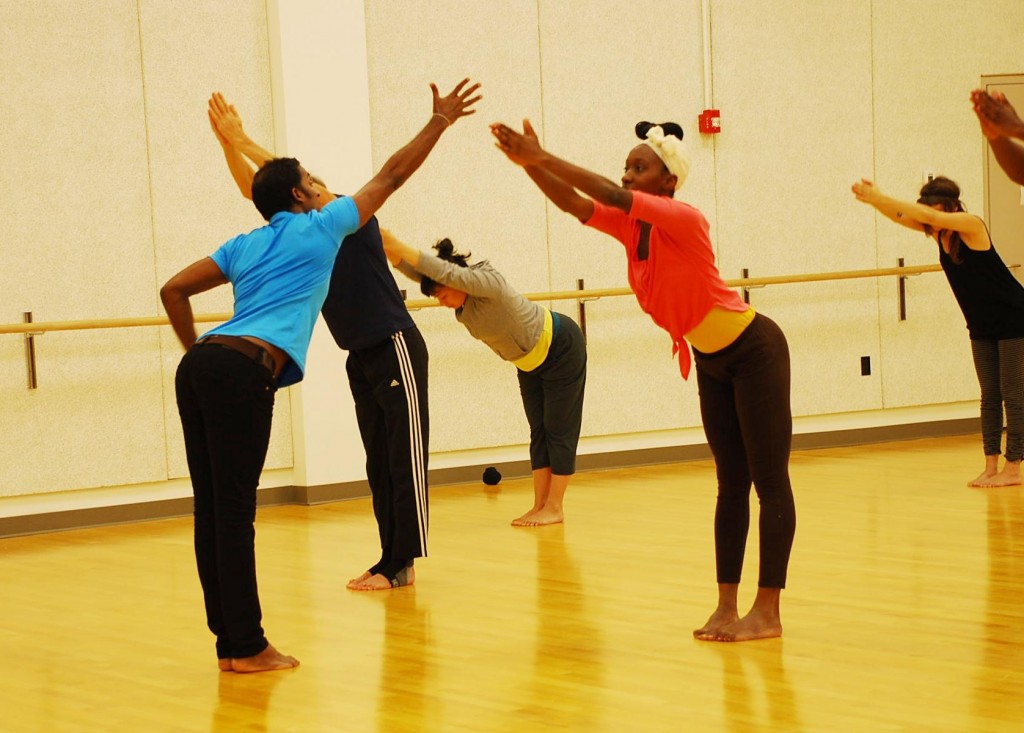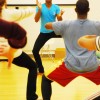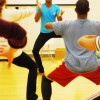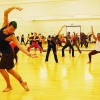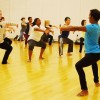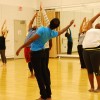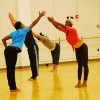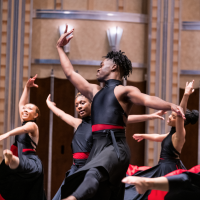Take 22 university dance students and place them in a shiny new dance studio. Now add a dynamic choreographer from Sri Lanka – and, suddenly, you have the makings of a joyous, lively, disciplined, and creative artistic and cultural exchange. That’s what happened last week when Kapila Palihawadana, artistic director of nATANDA Dance of Sri Lanka, offered a master class at Cleveland State University. Kapila is one of five international artists here for a three-month residency through the Cleveland Foundation’s Creative Fusion initiative. He is hosted full time by Inlet Dance Theatre, but will be deeply engaged in working across the community during his time here.
I got to the studio early and the students were already busy stretching and going through warm-ups. They chatted excitedly about the class to come, eager to meet this new artist and learn something they expected would be very different from their current studies in dance.
When Kapila arrived, he began by taking the class through a series of warm-ups. They began with familiar movements of shoulder rolls but the familiar morphed quickly into the exotic as he demonstrated the dynamic and fluid movements of the torso, which, he explained, were the foundation of much of traditional Sri Lankan dance movement. Hand and arm positions followed and the warm-up foot position – toes together, heels apart.
He demonstrated a number of basic movements, drilling the students on each and explaining why the thumbs reach for the ground (to draw energy up and into the body), why the arms create a precise embracing movement (so a drop of water falling on the shoulder would run down the arm and drip off the thumb – not the elbow) and why dancers should never let their arms cover their bodies – they must be proud of themselves: “We are performers. We like to show off!” Kapila also talked at length about the dancer’s duty to the audience. “We invite them into our experience. We are responsible for that experience.” Which is why he kept emphasizing total commitment to each movement – even if the dancer knew he or she wasn’t doing it quite right yet. “The audience will know if you do not mean what you do and they will not have the experience.” The final part of the class was a charge to the dancers to take what they had learned, combine it with the modern dance movement they already know, and improvise a four-beat movement of their own. After some time to work on the assignments, and with lots of help and encouragement from Kapila, the students demonstrated their improvisations to each other to end the class.Then there was much bustling to get dressed, collect books and water bottles, but the students were clearly reluctant for Kapila to leave, hanging around as long as they could to talk before heading off to a much less physically vigorous part of their academic day.Kapila will be offering master classes for local dance companies and several community classes while he is here. The foundation will post information on our website as soon as public events are finalized.
